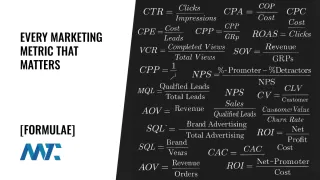The rise of ad blockers has significantly disrupted digital advertising, impacting businesses and marketers who rely on traditional online ads for audience engagement and conversions. With millions of users blocking ads, businesses must explore new strategies to maintain reach and effectiveness.
This article examines how ad blockers work, how businesses can detect them, and key strategies—including alternative ad formats, email and mobile marketing, and subscription-based revenue models—to mitigate the impact.
Table of Contents
How Ad Blockers Work
Ad blockers operate by identifying and preventing the loading of specific advertising elements on web pages. They use various techniques such as:
- Filter Lists: Blocks known ad servers and tracking scripts based on predefined lists (e.g., EasyList).
- CSS & JavaScript Blocking: Detecting and hiding common ad elements embedded in web pages.
- Network Request Interception: Prevents the browser from fetching resources from ad-related domains.
- AI-Based Recognition: Some advanced blockers dynamically analyze web page structures to identify and remove ads.
Detecting Ad Blockers
Businesses can detect ad blockers using several approaches:
- JavaScript-Based Detection: Attempting to load an ad-related script and checking if it executes successfully.
- DOM Analysis: Monitoring whether ad placeholders or banners are being removed from the page.
- Server-Side Monitoring: Tracking whether ad impressions and click-throughs are significantly lower than page views.
- User Analytics Comparison: Analyzing differences in engagement rates between users with and without ad blockers.
Key Strategies to Counteract Ad Blockers
Promoting Ad-Free Subscription Models
One of the most effective strategies is offering an ad-free experience in exchange for a subscription or user registration. Martech Zone has already incorporated this approach by utilizing a membership plugin and promoting it via Google Reader Revenue Manager pop-ups to capture more email addresses and promote the ad-free version.
Understanding Google Reader Revenue Manager
Google Reader Revenue Manager is a tool designed to help publishers generate revenue through subscriptions and contributions instead of relying solely on advertising.
Google Reader Revenue Manager allows businesses to:
- Offer a premium, ad-free experience to subscribers.
- Encourage direct user support through contributions or memberships.
- Seamlessly integrate with Google Pay to facilitate transactions.
- Capture more email addresses, allowing for direct marketing and personalized engagement.
This model mitigates revenue loss from ad blockers and builds a more engaged and loyal audience.
Leveraging Email and Mobile Marketing
Since email and mobile marketing are unaffected by ad blockers, they offer an effective way to maintain customer communication.
- Email Marketing: Use incentives like exclusive content, discounts, or early access to features to capture email addresses and personalize email campaigns to boost engagement.
- SMS and Push Notifications: To bypass ad blockers, use mobile channels for promotions, reminders, and content distribution.
- In-App and Direct Messaging (DM): Engaging users within apps and other owned platforms ensures that messaging reaches them without filtering.
Implementing Native and Contextual Advertising
- Affiliate Marketing: Partnering with brands to promote relevant products or services through content-driven recommendations allows businesses to earn revenue without relying on traditional ads. Affiliate links and sponsored reviews can be integrated naturally within blogs, videos, and email campaigns.
- Contextual Targeting: Instead of relying on behavioral tracking, show ads based on the page’s content (e.g., an article about fitness featuring gym equipment promotions).
- Native Ads: These blend seamlessly with website content, making them less likely to be blocked. Sponsored content, recommended articles, and branded storytelling are effective formats.
Adapting to First-Party (1P) Data and Server-Side Ad Delivery
- Collecting First-Party Data: With restrictions on third-party tracking, businesses should focus on collecting first-party data via registration, loyalty programs, and surveys.
- Server-Side Ad Injection: Delivering ads directly from the website’s backend, rather than client-side scripts, can bypass traditional ad blockers.
Invest in Owned Media and Influencer Marketing
- Content Marketing: Blogs, podcasts, videos, and other content-driven approaches build audience engagement without reliance on ads.
- Influencer Partnerships: Sponsored collaborations with influencers help businesses reach their audience authentically, unblocked.
The rise of ad blockers necessitates a shift in digital marketing strategies. By offering an ad-free subscription model using Google Reader Revenue Manager, leveraging direct engagement channels like email and mobile marketing, and embracing native advertising, first-party data, and content-driven approaches, businesses can continue to thrive despite declining traditional ad visibility.
Your site’s proactive adoption of an ad-free model with email capture is a prime example of how businesses can adapt to changing consumer preferences while maintaining sustainable revenue. The key lies in diversification, innovation, and prioritizing user experience to maintain strong campaign response rates.
